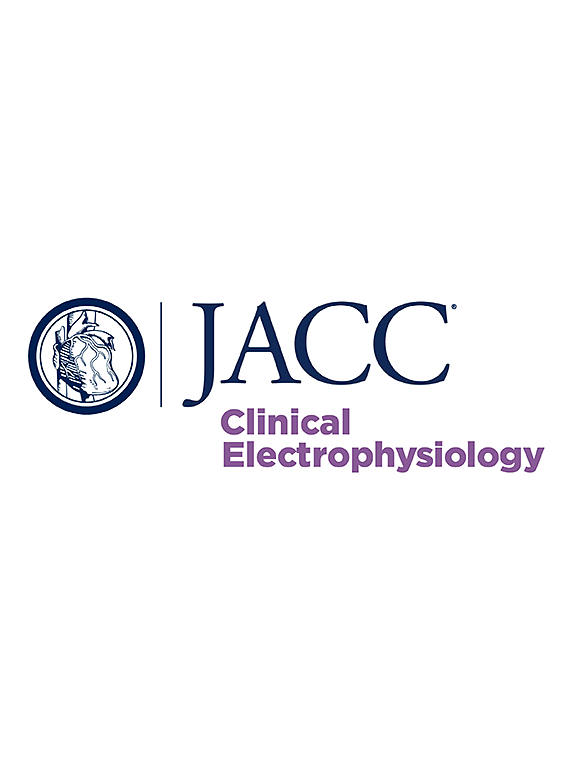并发心室电风暴和感染的临床结果。
IF 7.7
1区 医学
Q1 CARDIAC & CARDIOVASCULAR SYSTEMS
引用次数: 0
摘要
背景:电风暴(ES)是一组持续性室性心律失常,可能由心律失常底物上的各种触发因素引起。感染与ES之间的关系尚不清楚。目的:本研究旨在探讨并发ES和感染的临床特征和预后。方法:研究人员回顾性研究了2004年5月至2022年3月期间的ES患者。参与者分为两组:感染组(感染组)和未并发感染组(非感染组)。该研究比较了临床结果和预后。结果:共纳入ES患者309例;68例并发感染,其中28例有菌血症。菌血症中以耐甲氧西林金黄色葡萄球菌最为常见,共9例(32.1%),拔铅13例(46.4%)。在既往无明显感染的患者中,15例(5.3%)发生ES后菌血症。在2年随访期间,感染组的死亡率明显高于未感染组(log-rank P < 0.001)。多因素logistic回归分析发现菌血症(OR: 5.23;95% ci 1.91-15.02;P = 0.001)和左室射血分数(LVEF)降低(每增加1%,OR: 0.95;95% ci: 0.93-0.98;P = 0.002)作为死亡率的独立预测因子。结论:在ES患者中,并发感染的患者死亡率增加。在没有感染的患者中,有50%的患者在ES后出现菌血症,从而增加了在长期住院期间发生医源性感染的可能性。菌血症和LVEF降低是死亡率的独立预测因子。本文章由计算机程序翻译,如有差异,请以英文原文为准。
Clinical Outcomes of Concurrent Ventricular Electrical Storm and Infection
Background
Electrical storm (ES) is a cluster of sustained ventricular arrhythmias that may be caused by various triggers on the arrhythmic substrate. The association between infection and ES is unknown.
Objectives
This study sought to investigate the clinical profile and prognosis of concurrent ES and infection.
Methods
Study investigators retrospectively studied patients with ES between May 2004 and March 2022. Participants were divided into 2 groups: those with infection (infection group) and those without concurrent infection (noninfection group). The study compared clinical outcomes and prognoses.
Results
A total of 309 patients with ES were included; 68 had concurrent infection, and 28 of these patients had bacteremia. Among those with bacteremia, methicillin-resistant Staphylococcus aureus was the most common pathogen, with 9 patients (32.1%), and lead extraction was performed in 13 (46.4%). Among the patients who clearly did not have preceding infection, 15 (5.3%) developed bacteremia after ES. During the 2-year follow-up period, the infection group had significantly higher mortality than the noninfection group (log-rank P < 0.001). Multivariate logistic regression analysis identified bacteremia (OR: 5.23; 95% CI 1.91-15.02; P = 0.001) and decreased left ventricular ejection fraction (LVEF) (each 1% increase, OR: 0.95; 95% CI: 0.93-0.98; P = 0.002) as independent predictors of mortality.
Conclusions
Among patients with ES, those with concurrent infection have increased mortality. Of patients presenting without infection, >5% developed bacteremia after ES, thereby raising the possibility of iatrogenic infection during prolonged hospitalization. Bacteremia and decreased LVEF are independent predictors of mortality.
求助全文
通过发布文献求助,成功后即可免费获取论文全文。
去求助
来源期刊

JACC. Clinical electrophysiology
CARDIAC & CARDIOVASCULAR SYSTEMS-
CiteScore
10.30
自引率
5.70%
发文量
250
期刊介绍:
JACC: Clinical Electrophysiology is one of a family of specialist journals launched by the renowned Journal of the American College of Cardiology (JACC). It encompasses all aspects of the epidemiology, pathogenesis, diagnosis and treatment of cardiac arrhythmias. Submissions of original research and state-of-the-art reviews from cardiology, cardiovascular surgery, neurology, outcomes research, and related fields are encouraged. Experimental and preclinical work that directly relates to diagnostic or therapeutic interventions are also encouraged. In general, case reports will not be considered for publication.
 求助内容:
求助内容: 应助结果提醒方式:
应助结果提醒方式:


